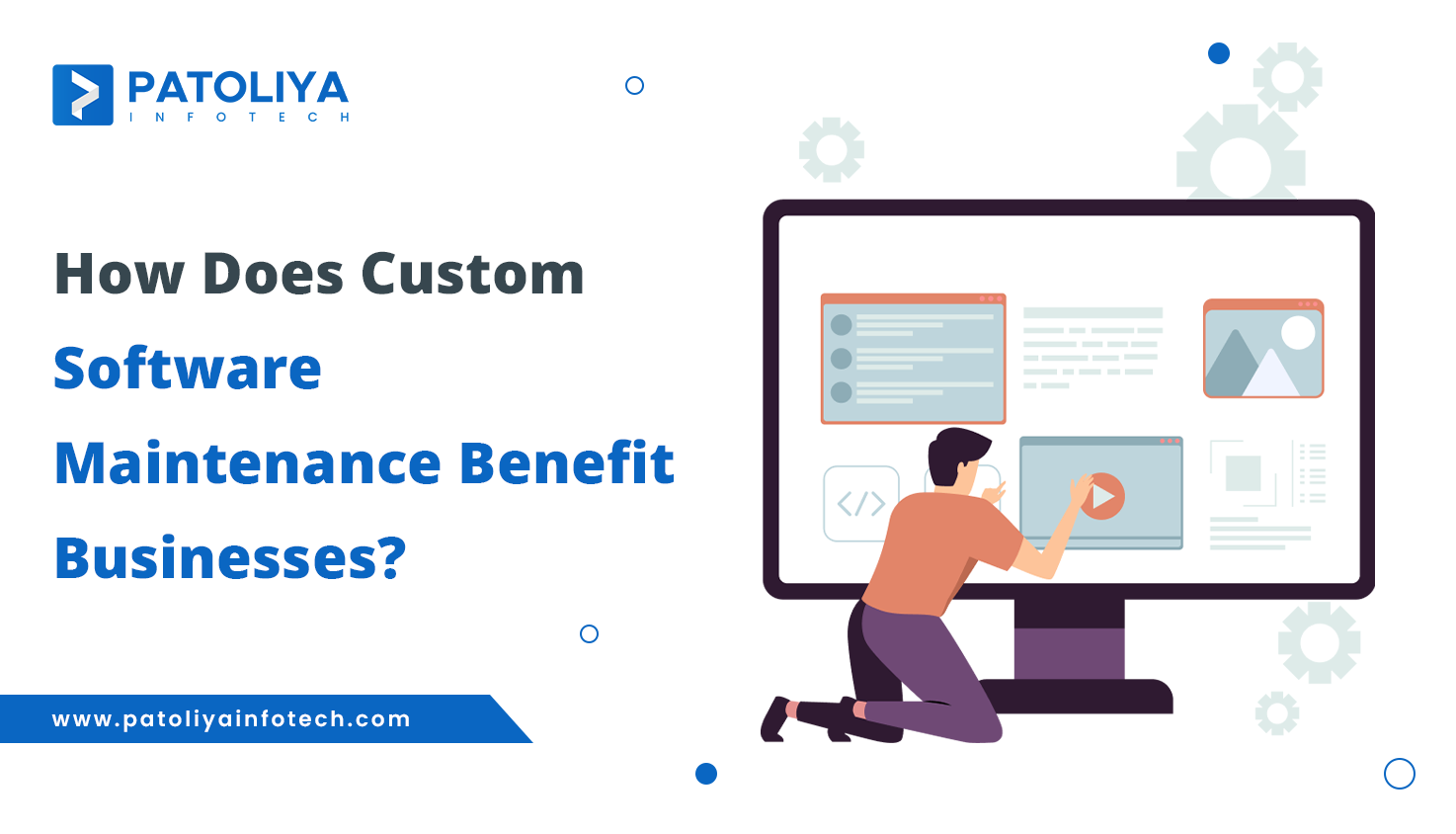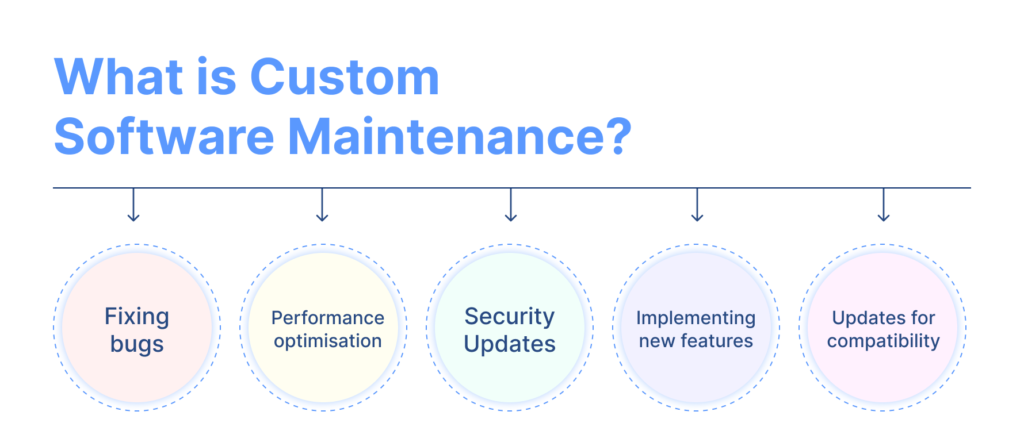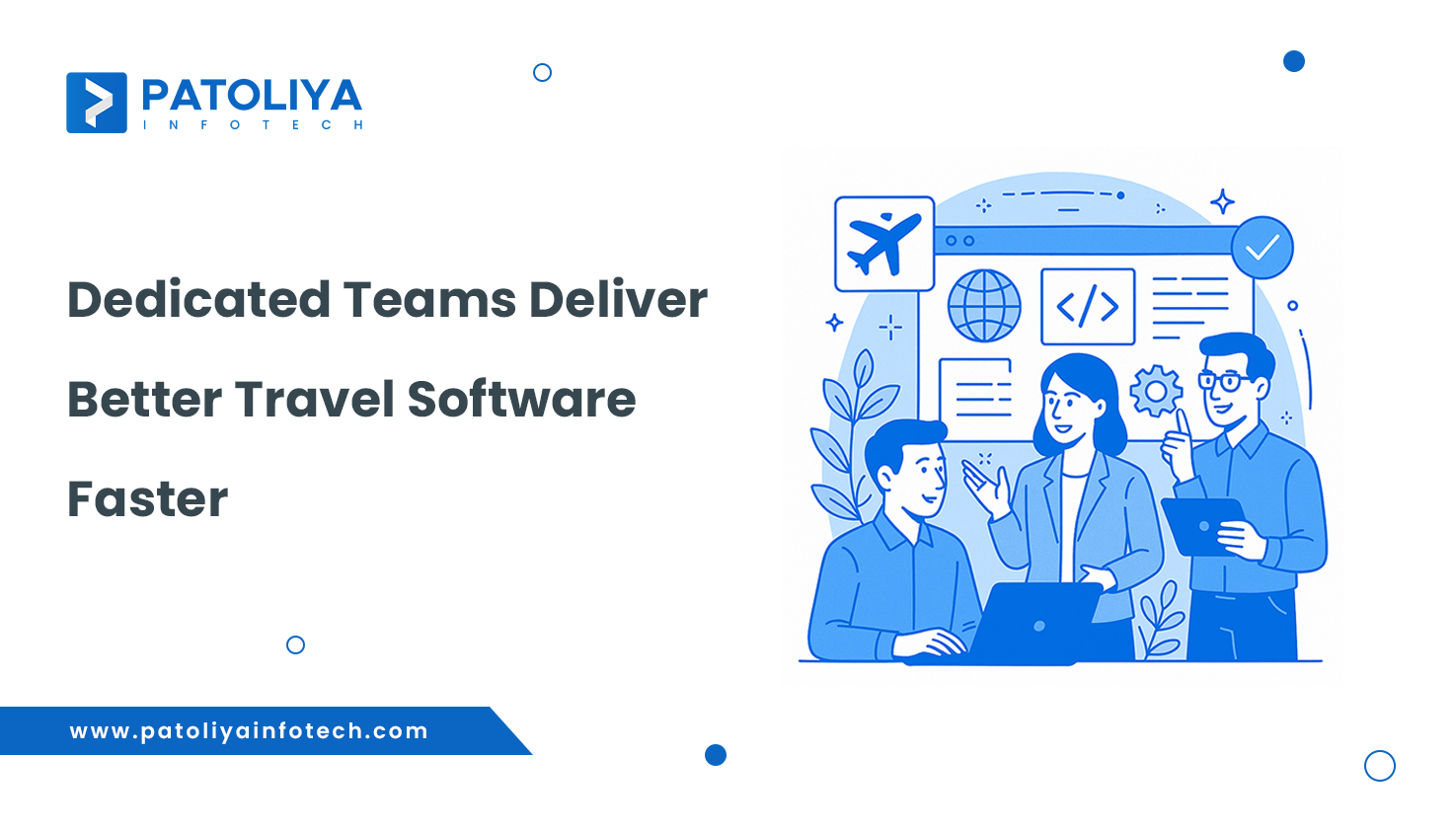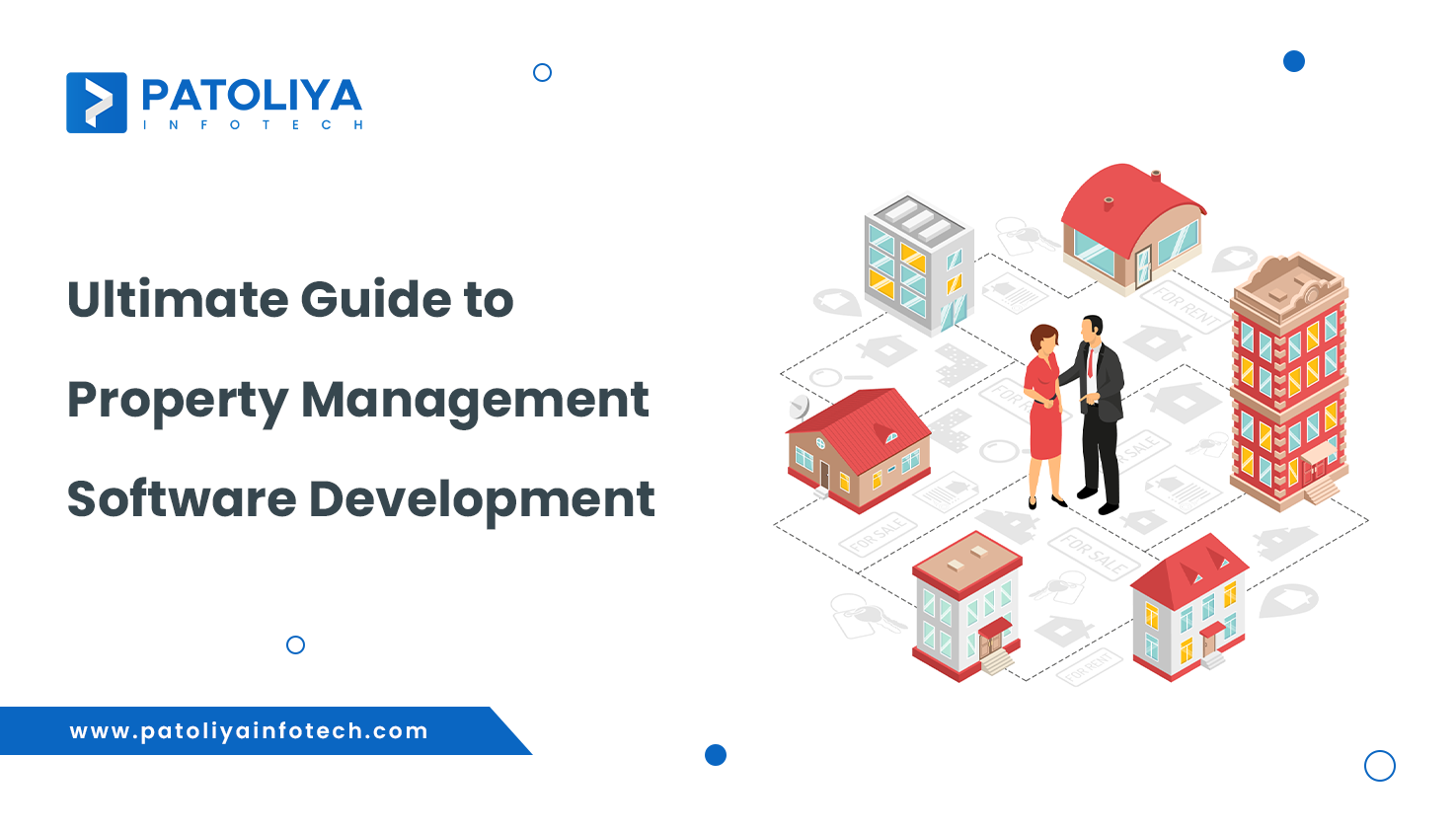How Does Custom Software Maintenance Benefit Businesses?

Table of Contents
Many companies rely heavily on custom software services, yet even the most advanced software needs regular custom software maintenance. This procedure may gradually increase in the absence of an initial maintenance plan, leading to the following outcomes:
- Undermining productivity: Employee productivity can be seriously hampered by tardy responses and poor performance.
- Security flaw: Your important data is at risk since the Apache software is susceptible to cyberattacks.
- Outdated Software: If your company expands, outdated software might not be able to adapt to your growing needs.
If software and maintenance services are what you're looking for, we are here for you.
- Improve productivity and security: Consistent monitoring addresses vulnerabilities to safeguard your data while boosting efficacy and efficiency.
- Increase scalability and flexibility: By incorporating new features or adding new functionality, maintenance helps you to modify your programme to meet changing requirements.
- Maximize Return on Investment (ROI): A well-maintained software programme provides tremendous benefits when it comes to minimizing downtime, data loss, and the need for expensive maintenance.
What is Custom Software Maintenance?

A variety of tasks are included in custom software maintenance, which is intended to maintain the safe and efficient operation of your custom software programme. This comprises:
- Fixing bugs: Finding and fixing flaws in software that can lead to errors, crashes, or strange behavior.
- Performance optimisation: The process of adjusting the programme to make sure it responds quickly and operates well.
- Security Updates: Patching flaws in your software to keep it safe from online threats is known as security updates.
- Implementing new features: Including new features to address changing business requirements.
- Updates for compatibility: Making sure your programme continues to work with evolving operating systems and other technologies.
Why is Custom Software Maintenance Important?
Even though developing custom software can be expensive up front, skipping maintenance can result in much higher costs later on. This is how your company benefits from having a strong custom software maintenance plan:
- Enhanced Security: You can keep ahead of security threats and safeguard your important data with regular upgrades.
- Enhanced Productivity: By ensuring that your software functions properly and addressing problems, you may increase efficiency and the productivity of your staff.
- Scalability and Flexibility: By including new features or integrating with other systems, maintenance enables you to modify your programme to meet evolving company needs.
- Competitive Advantage: You may stay ahead of the competition by updating your software with the newest features.
- User happiness: A software programme that is kept up to date offers a favorable user experience, which promotes increased customer and employee happiness.
Also read "How Can React Native Simplify Mobile App Maintenance?"
Who Should Perform Custom Software Maintenance?
For custom software maintenance, there are two primary solutions available:
- Internal development team: You can handle software maintenance in-house if you have the necessary funds and knowledge. But this may get pricey, particularly for sophisticated applications.
- Third-party maintenance provider: By collaborating with a respectable software maintenance business, you can benefit from their infrastructure and experience at a possible discount.
Choosing the Right Custom Software Maintenance Provider
Think about the following when choosing a maintenance provider:
- Experience: Seek out an organisation with a track record of managing comparable software programmes.
- Competence: Verify that they possess the technical know-how and abilities needed to maintain the efficient operation of your programme.
- Communication: Select a service who can effectively communicate with you in order to stay updated on maintenance tasks.
- Cost: Compare the price structures of various companies after obtaining estimates from them.
Enhanced Performance and Reliability
Your apps will function correctly thanks to custom software maintenance. To fix issues and boost programme performance, regular updates and patches are required. By making constant improvements to your software, you may lower the amount of performance problems that could hurt your company.

- Bug fixes and updates: Regular maintenance helps in finding and removing problems that might affect software functionality. The programme is updated with the newest technological advancements thanks to the new upgrades.
- System optimization: Your system will operate at its best with custom software maintenance that lowers latency and downtime through performance tuning and optimisation.
You can check for "Maintaining Your App's Success is Why Continual Upkeep Is Essential"
Improved Security
Security is crucial, and customized software security is crucial in defending the data of your company against online attacks.
- Vulnerability patching: Updating your software on a regular basis helps to prevent malicious attacks by finding and fixing vulnerabilities.
- Compliance: Strict regulations apply to many businesses. Updating your software ensures that it complies with these regulations, preventing fines and legal action.
Cost Efficiency
On the whole, investing in custom software can save a lot of money. As substantial damage can be expensive to fix and result in a large amount of downtime, prompt repairs help avoid it.
- Preventative Maintenance: Major issues can be avoided with routine checks and updates, saving money on urgent repairs and system upgrades.
- Resource efficiency: Operating costs are decreased by using software that is efficient in lowering the demand for unnecessary hardware resources..
Scalability and Flexibility
Software must change with the industries they operate in. Maintaining your apps using custom code makes sure they can grow and change to meet evolving business requirements.
Visit the blog for the following information, "How the It services are changing the Industries"
- Scalability: Updating the software on a regular basis ensures that it can expand to meet the needs of your expanding company.
- Adaptability: Updating your software gives it a competitive advantage by allowing it to adjust to shifting market dynamics and corporate tactics.

User Satisfaction
Improved user happiness and efficiency are the outcomes of having a well-maintained software system.
- User Interface Improvements: User interfaces can be enhanced by ongoing innovation to make software more adaptable and user-friendly.
- Performance Improvement: Users may do their tasks without needless delays or disruptions by making sure the software functions properly.
Prolonged Software Lifespan
You may get the most out of your initial investment by keeping your custom software maintained on a regular basis.
- Longevity: Your software will last longer and require fewer costly replacements if you update it.
- Continuous Improvement: Updating and maintaining your programme with new technology is made easier by encouraging continuous development.
Risk Mitigation
Performing preventive maintenance of custom software lowers the risk of major crashes and data loss.
- Data Security: Data loss and breaches can be prevented by regularly backing up and updating security safeguards.
- Disaster recovery: To maintain business continuity in the case of a loss, recovery plans usually incorporate disaster recovery procedures.
Enhanced Integration Capabilities
Integrating new technology with existing systems is becoming more and more crucial for businesses. Maintaining custom software guarantees smooth integration with services and apps from third parties.
- API Updates: Keeping your APIs current enables your programme to communicate with other programmes more effectively.
- Compatibility: Updating your software makes it continue to work with other programmes and hardware, which improves usability.
Competitive Advantage
Your systems will always be up to date and operating at peak efficiency if you manage your unique software, which provides you a competitive edge.
- Innovation: It's possible to stay ahead of the competition by consistently introducing new features.
- Effective software reduces downtime and boosts productivity because it is more efficiently developed.
Customized Solutions
Frequent maintenance guarantees that your software will continue to fulfil your unique business requirements by enabling flexibility.
- Updates that can be tailored to meet changing company demands are possible thanks to maintenance.
- User input: You can ensure that your software is always improving to better serve your users by integrating user input into the maintenance cycle.
Conclusion
custom software maintenance is a strategic investment, not only a last-minute consideration. Taking care of possible problems beforehand and making sure your software is current will allow you to reap many rewards:
Boost operational efficiency: Costs are decreased and worker productivity is raised by well-designed processes and apps.
Enhanced Security Level: Updating your software on a regular basis protects it against emerging online threats.
Scalability for future growth: Your software may expand and change as your company does, giving you the freedom to seize new chances.
Competitive edge: Staying ahead of the curve and preserving your edge is made possible by having the newest goods and services.
You may transform your custom software application from a possible liability into a vital asset that fuels the long-term success of your company by putting in place a robust maintenance programme.



